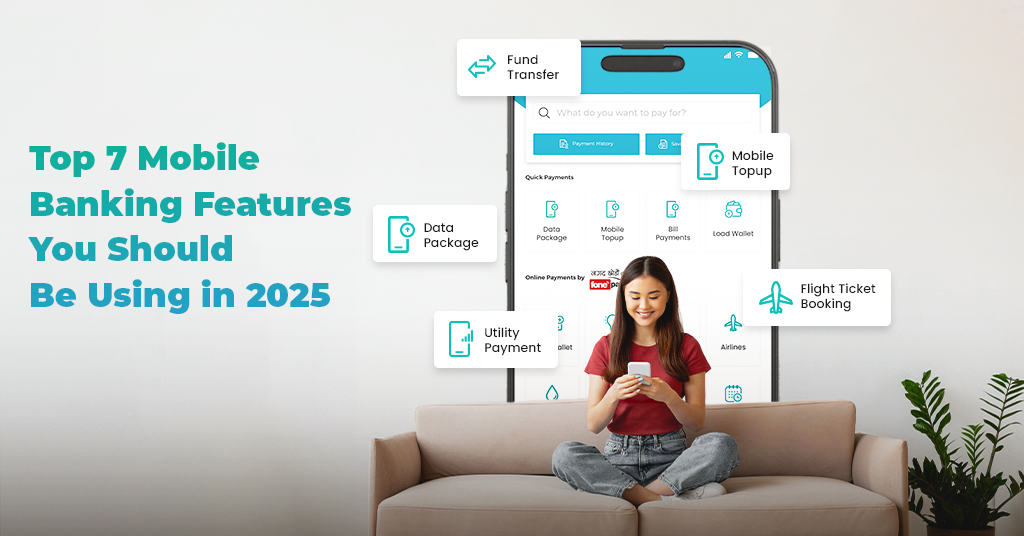Transporting back ten years in time you’re out shopping and forget your wallet, you’d immediately panic but, what about now? Now you’d go ‘mobile banking chadai cha ni’ and proceed to pay with your phone. In just a few years, the landscape of financial services in Nepal has undergone a remarkable transformation with an unprecedented surge in popularity and adoption of mobile banking.
With the continuous progression of mobile banking fueled by advancements in technology, the impact of this digital solution goes beyond convenience and serves as a catalyst for economic development. As mobile banking evolves, incorporating innovative features such as digital mobile payment systems like Fonepay, it improves the adoption rate of business by providing convenient payment solutions and directly having a positive impact on the country's economy.
With all the progress in the banking world that is shaping the now of Nepal, one might wonder what lies ahead in the future? Well, here are some possibilities.
Future Avenues for Mobile Banking
The ongoing evolution of mobile banking opens up new possibilities for a stronger financial future with innovative trends popping up.
1. Advancements and Innovative Technology with Artificial Intelligence
Artificial Intelligence (AI) is emerging as a crucial player, with the potential to make a significant impact. AI is enhancing customer service through the use of chatbots, improving data analysis and fraud detection, enabling personalized services, and automating various processes, thus minimizing errors and enhancing security. As reported by Allied Market Research, by 2030, the AI in the banking industry is projected to reach $64.03 billion.
a. Data Analysis and Fraud Detection
AI-powered systems can be used for data analysis, pattern recognition, and real-time fraud detection. Through the machine learning process data analysis and collection becomes easier. This proactive approach helps protect customers' accounts and sensitive information with enhanced security of AI, ensuring an even more secure banking experience.
b. Credit Scoring and Risk Assessment
AI can also be employed in credit scoring processes, analyzing various data points to assess creditworthiness and streamline loan applications. Foneloan, for instance, utilizes the Decision Analytics system to monitor customer creditworthiness efficiently. Further developing that, the adoption of AI-based credit scoring systems can improve loan decision-making processes.
c. Personalized Services
Digital mobile payment systems integrated with biometric authentication and artificial intelligence (AI) continue to make banking experiences more personalized. Data retrieved through mobile banking interfaces can further be utilized to create responsive designs and features such as personalized notifications and banking advice provided through the customers mobile banking accounts.
2. Cross Border Payments
Mobile banking has expanded the scope of cross-border payments, enabling real-time exchange rates and facilitating faster, more convenient, and cost-effective international transactions. Collaborations like the recent Fonepay, Nepal & Lanka Pay, Sri Lanka and Fonepay & NIPL, the international arm of the National Payments Corporation of India, enabling cross border payments between the partnered countries are set to fuel expansion and growth for the companies, and their home countries. This provides an opportunity for expansion in the digital landscape to all the individuals in the partnered countries and opens up new avenues for their business and economy.
3. Cardless Withdrawal
Another interesting prospect that is emerging with increasing adoption is Cardless Withdrawal. With the growing emphasis on digital and mobile banking, this rising trend of contactless ATM interaction proposes a flexible approach to banking. All you need is your mobile banking account and your mobile number with which you can withdraw from your account through the nearest ATM without any card required. One of the first adopters of this trend in Nepal was Laxmi Sunrise Bank, and more banks are following suit by incorporating cardless withdrawals, opening up even more possibilities for development.
The Road Ahead
Ten years into the future, and you’re shopping; surely you’ll be paying with mobile banking or relying on its interface and avenues in some way. In whatever manner that happens, it proposes a sense of wonder and opportunity for further development. Just as the banking world has changed in the past decade, the possibilities for the future decade are vast and almost unimaginable.
Through the convenience in service offered by AI technology in mobile banking, or potential business development through cross-border payments, to contactless ATM interaction through cardless withdrawals, these avenues can further be opened up. Who knows what other new innovations come up in the banking landscape in the future? The potential presented by mobile banking in Nepal is boundless, and the possibilities numerous.




